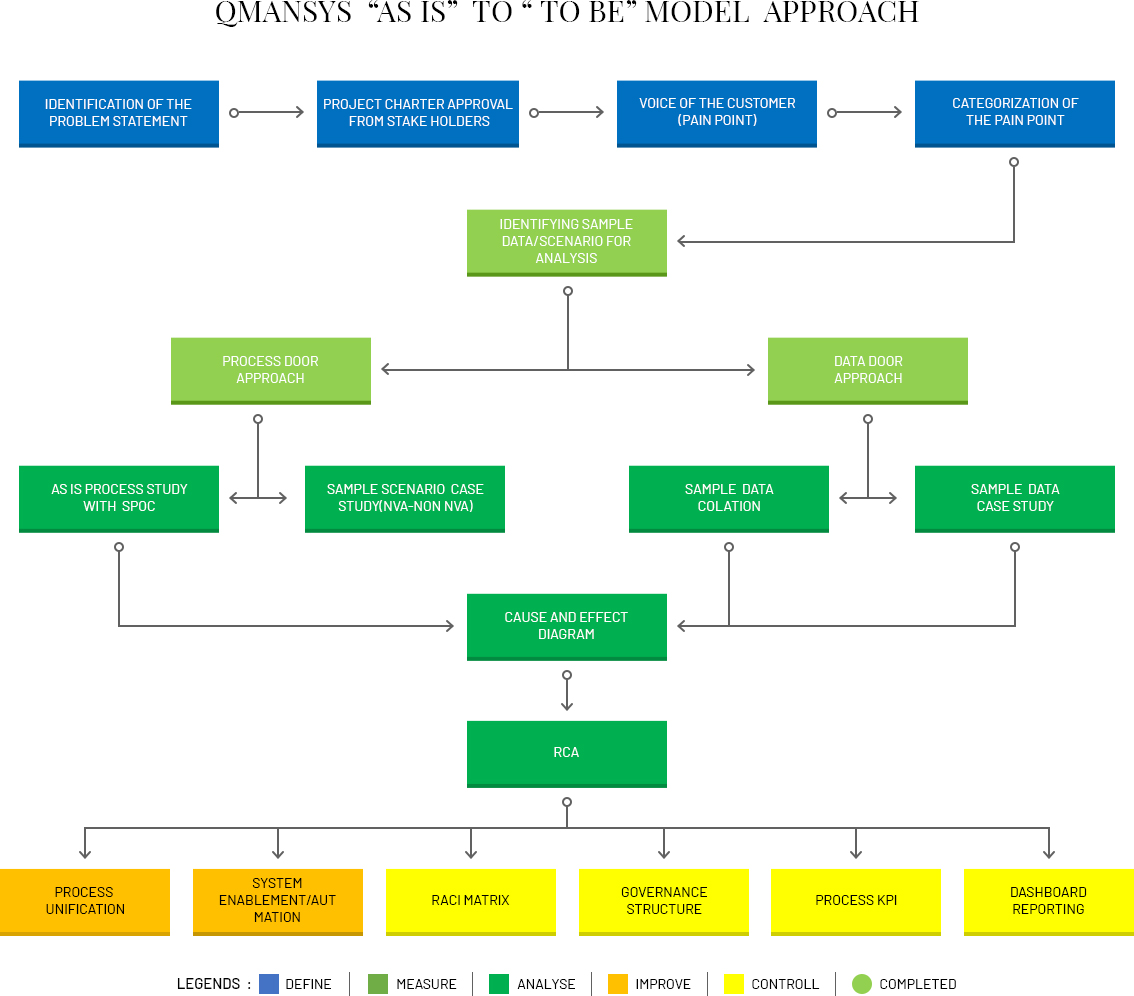
The as-is state of a process is the “now” state. It’s how the process operates before you make any changes or improvements.
The to-be process, on the other hand, is the future state.
To actually make your process improvement initiative work, you need to document and map both states. The “as-is” allows you to get an accurate view of how the process works. Unless you’re someone personally responsible for working with that specific process, this part is essential for understanding how to make any sort of improvements.
Once you already know how the process is, you can analyze it and propose certain improvements. At that point, you need to document the to-be state. Having a map of the new process makes it easier to implement for several reasons
Point of Reference – You’ll have something to refer to on what changes you’re supposed to make
Process Standardization – No one likes change. To make sure that your employees stick to the new process rather than just revert to the old, you can use the to-be process document as a point of reference. To help you actually understand how the two process states can help, we’ll explain how to document them and use the documentation for process improvement.
Before you can actually document the as-is process state, you need to have a very clear understanding of it.
Unless you’ve worked the process yourself enough times, you’ll have to do some research.
There are several ways to gain an understanding of the process…
Observation – The most straightforward approach. Simply observe the process as it’s going on.
Interviews – Personal interviews with employees working on the process.
Questionnaires – Surveys on the process in question. More efficient than holding interviews, but generally less informative.
Project Teams – A special team composed of individuals who are either employees working on the process itself, or process improvement experts.
In most cases, it’s usually a good idea to add “interviews” to the process research mix. The people who are most knowledgeable about the process are, as you could have guessed, the employees who actually work on it. They can be a wealth of insight – some of them might even already have ideas on how to improve the process.
Ideally, you’d want to consult with employees who play different roles within the process.
So for example, let’s say you’re working with a client onboarding process. You’d want to talk with an employee from each of the following departments: sales, onboarding, and customer service.
Once you’ve got all the information on the process, you can start mapping it.
The most straightforward way to do that is with a process flowchart. Simply draw the different steps within the process, and you’re all set. So, for example…
There are 3 main ways to do process mapping…
Pen & Paper – The most straightforward option. Just grab a pen & paper and draw the flowchart.
Flowchart Software – Software made for the purpose of creating workflow diagrams. Better than pen & paper, since you can share the document with your employees.
Workflow Software – Used for digitizing and keeping track of processes. This has the added benefit of making the processes run faster and smoother since no one will ever ask “who’s supposed to do X, again?”
Once you’re done with the analysis, you should have several different ideas on how to improve the process.
At that point, you can start creating the to-be process map. This works just about the same way as mapping the as-is process: you create a flowchart that’s just about the same as the as-is process, with any adjustments you made present.
With the to-be process, the implementation is the harder part. Sometimes, your improvements might turn out to be not as effective as you’d thought. Others, your employees will take a while to get used to the new process.
There are several best practices we recommend to help make the implementation easier…
Start Small – While your new process might seem to be a great idea at a glance, it might turn out to be a disaster. To account for this, start the process on a small scale. Once you’re certain that the new process is empirically better, you can scale it up & apply it company-wide.
Enforce the Process – You can’t just go up to your employees out of nowhere and say, “we’ll be doing things completely differently from now on.” They need to be made aware of why you’re making changes to the process and how it’s going to affect their work. Then, you need to make sure that they stick to the new process. There are 2 ways to do this: frequently check on their work, or use workflow management software to enforce the new process.
Benchmark the Metrics – You have to be 100% certain that the new process is better than the old; otherwise, you’re only going to end up wasting time. Pick the right metrics to benchmark post-implementation. This way, you can be sure that the changes you make are definitely positive.
Post-Implementation2: Analysing the As-Is Process and Finding Improvements
Before you can start with the to-be process documentation, you need to figure out what it looks like.
You need to analyze the as-is process and find any inefficiencies and flaws, some of which can be a bit hard to spot. Since every business has completely different processes, there’s no one sure-fire way to do this. You could, however, ask yourself the following questions to get some insight.
Are deadlines frequently missed within the process?
Are some of the process steps taking unusually long?
Are some of the process steps a time or money sink? Why?
What process step has the highest impact on output? Are there any ways to make it more efficient? Can you use technology to automate it?